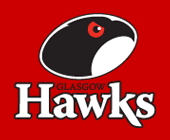|
Alan Massie in Scotland on Sunday
(Glasgow beat Fiji at Hughenden when they ranked 5th on IRB standings) Ed
THERE are immediate and long-term problems in Scottish rugby.
The immediate one is how to pull the national team, and also Glasgow and Edinburgh, out of their present slump. The long-term one is how to improve our youth structures and accelerate the development of young talent. Arguably there is also a medium-term one: how to improve at least the top level of the amateur club game and the passage from that to the professional one.
Addressing these different problems is difficult, but looking back to the days when we were good may offer some hints.
We should first recognise that we have always had to made the best use of a limited pool of talent. There have always been more players capable of playing successfully at international level in England, France and Wales, than here in Scotland.
This had one advantage. As Norman Mair used to write in these columns, we very rarely overlooked a talented player, and we often got more out of a player than his natural talent suggested he was capable of. We sometimes made a silk purse out of what had looked like a sow’s ear.
Nevertheless even our Grand Slam-winning teams of 1984 and 1990, and Colin Deans’s team of 1986-7 which I have always thought was better than either the 1984 or 1990 XV, contained a few players who would have been unlikely to have played international rugby if they had not been Scottish.
One reason for the success of these teams, and of the 1999 one that won the Five Nations, was the quality of leadership displayed by the captains, Jim Aitken, Deans, David Sole and Gary Armstrong – and one should add Finlay Calder, captain of the 1989 Lions, and perhaps Gavin Hastings, another Lions captain, to that list.
They were all captains who took the game, as it were, by the scruff of the neck. Scotland has lacked this driving inspirational leadership for years, perhaps because captains are now too subservient to coaches.
This is why many would like to see Al Kellock named as captain for the coming Six Nations, even though the set scrum always goes better when Jim Hamilton is at lock instead of him. His record as a leader at Glasgow is pretty good, despite last weekend’s horror show in Limerick.
One reason for our success in the 1980s was that we had formed competitive leagues before England, Ireland or Wales. This is something that can’t be repeated. However, above and beyond the club leagues, we also had the Inter-District Championship, which by the ’80s was extremely fiercely contested, and which attracted good crowds, even though it was perforce played at the worst time of the year. It served as a bridge between the club and international game, and competition for a place in your District side was often fierce, especially in the Borders.
One of the SRU’s worst mistakes when professionalism came in was to downgrade the Districts and to abandon the Inter-District championship. It should be revived because it gives club players something to aim at and an opportunity to play at what should be a higher level.
The Districts should also be made responsible for youth development and each should form its own academy. Perhaps there should now be five districts rather than four, because the expansion of the club game north of the Forth suggests that the old hybrid North-Midlands district should be split in two.
The proposal that Youth Academies should be the responsibility of the Districts won’t please some of the leading clubs who would prefer that they were responsible for youth development – and given money by the SRU for this purpose. This isn’t an entirely selfish view, if only because these clubs already attract ambitious youngsters from clubs in lower divisions. It’s also the case that the Premiership clubs in England and the Top 14 ones in France, have their own academies. But we are not here comparing like with like, since all these English and French clubs are fully professional.
The Districts are best suited to run academies because they represent all the clubs in their area. There are for instance many clubs in Glasgow, but the only Glasgow District club in the Scottish Premiership is Ayr, while there are only two city clubs, Hawks and Hillhead-Jordanhill in the National League. The Districts can also arrange to make use of university facilities in Edinburgh, Glasgow, Stirling, Dundee, Aberdeen and Galashiels (where Heriot-Watt has a college).
The Districts are – or should be – competent at balancing the interests of clubs and young players. When we had a national academy, clubs were frequently irritated to be deprived of academy players, or to be told that they were permitted to field them for only half a game. Some academy members spent an awful lot of time in the gym, and far too little on the field which is where their skills are tested and refined. In some cases their development was visibly retarded.
Finally, basing the academies in the Districts would allow for a very competitive inter-District academy championship which would serve as a real testing ground for future international players. In short, reviving the Districts and giving them the autonomy they used to enjoy would reverse the centralising process evident since the game went professional at the top level, and serve as a much needed stimulus.
This article was originally posted on 9-Dec-2012, 07:39 by Hugh Barrow.
Last updated by Hugh Barrow on 9-Dec-2012, 08:23.
|









